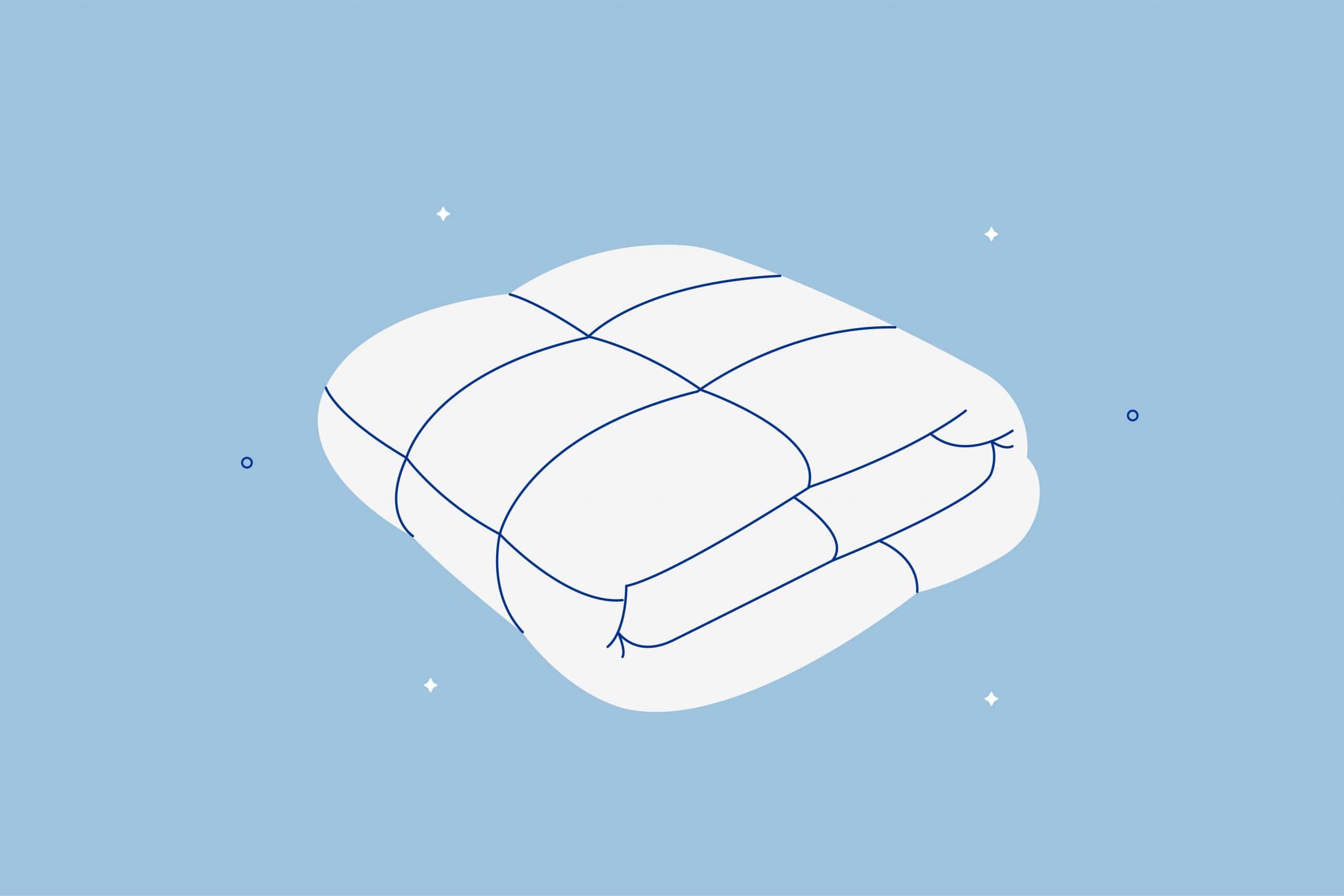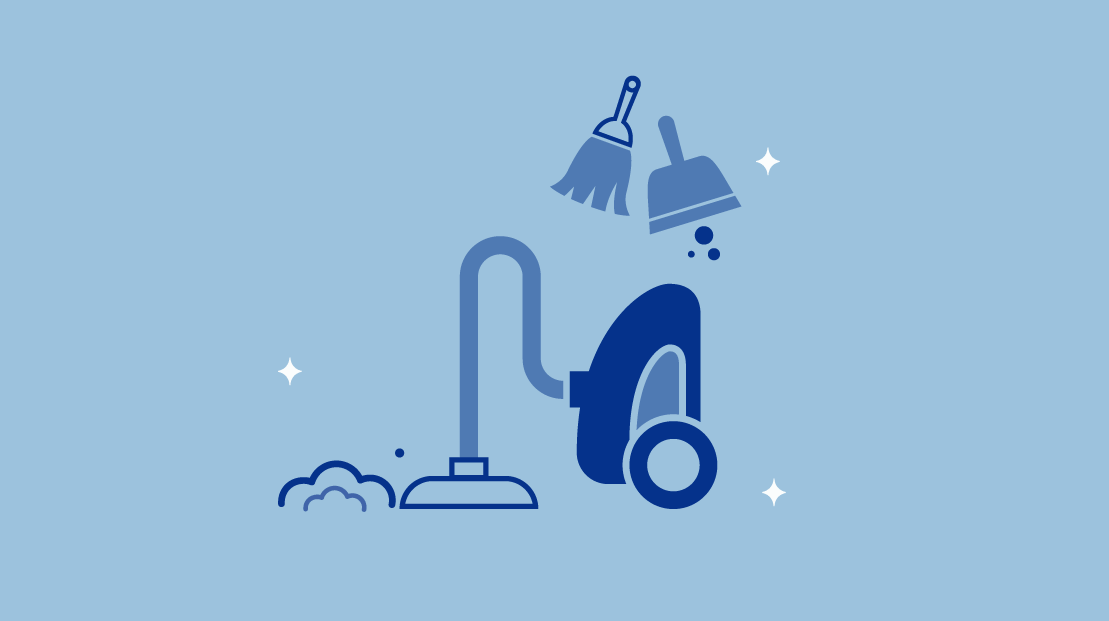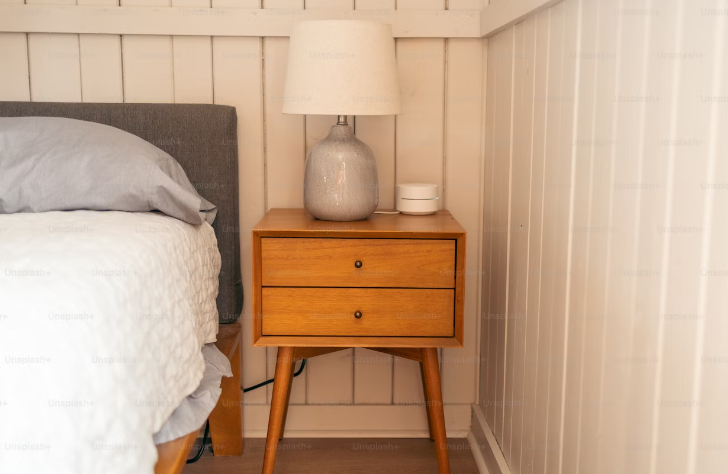Key Takeaways
- Which Material to Choose: When choosing between a down comforter and a down alternative comforter, consider factors like fill power, warmth, allergies, maintenance, durability, and price. Down comforters are known for their superior insulation and longevity but come at a higher cost, while down alternative comforters are more budget-friendly and hypoallergenic.
- Staying Warm in the Cold: Fill power, which measures the fluffiness and insulating ability of the comforter, is generally higher in down comforters, making them ideal for colder climates. Down alternative comforters require more filling to achieve similar insulation, leading to a heavier feel and potential heat retention issues.
- Cleaning Comforters: Maintenance varies between the two types of comforters. Down comforters typically require dry cleaning or special care, while down alternative comforters are washer and dryer-safe. Your choice should align with your maintenance preferences and budget constraints.
Down and down alternative comforters might look the same on the outside and serve the same purpose, but their fills are more different than you might think. Down comforters contain bird feathers, while down alternatives contain a synthetic fill to mimic down.
The different fills affect fluffiness, durability, care needs, and most importantly, the price tag. Down is pricey, which is why down alternative was invented in the first place.
Looking for the best comforter? If you’re wondering whether to invest in a down comforter or save some cash with down alternative, we’ve got you covered. We compare the details of the two fills to help you better understand their differences and decide which is best for you.
Quick Guide: A 30-Second Summary
| Best Comforter Overall | Amerisleep Recover+ Comforter |
What is Down?
Down refers to the feathers from duck and geese underbellies. Down comforters are notably soft, warm, and fluffy. At the same time, down is lightweight and lofty, so you don’t feel weighed down by your comforter or overly hot.
What is Down Alternative?
Down alternative is a comforter fill built to simulate down’s properties and is typically made from naturally hypoallergenic materials such as cotton, rayon, or synthetic fibers. While down alternative isn’t an exact replica of down, it’s a good comforter option for cruelty-free shoppers, allergy sufferers, and people on a tight budget.
Choosing Between Down and Down Alternative
When choosing a comforter, consider how down and down alternative performs as the fill impacts coziness, weight, and lifespan. Also, be sure to take a look at both of their price tags since, even if you prefer one over the other, the comforter might not be an option if it’s too spendy.
Fill Power and Warmth
Fill power measures how many cubic inches one ounce of fiber or feather clusters take up in a comforter. It affects the fluffiness and loft, as well as the comforter’s insulating ability and breathability. In other words, fill power determines how easy it is to stay warm in bed.
Down:
Down clusters are more fluffy and insulating than down alternatives. For down, a 500 to 750 fill power provides adequate insulation and fluff for most users. Any fill power over 750 is even more insulating and fluffy but is best for individuals living in colder climates. Since down is naturally very light, high fills won’t feel heavy or constricting.
While down is warm and fluffy, it’s still quite breathable, so hot sleepers don’t have to worry about waking up sweaty or uncomfortable.
Down Alternative:
It’s quite difficult to determine the fill power of down alternative comforters due to their composition, despite many companies advertising down alternatives as having a specific fill power. To reach the same insulation level as down, a down alternative needs much more filling, resulting in a heavier comforter.
A down alternative fill doesn’t regulate temperature well and isn’t very breathable, so a down alternative comforter with extra filling might trap body heat and lead to uncomfortable, restless nights.
Allergies
Allergy sufferers might be more inclined to buy a down alternative comforter over a down comforter because it’s less likely to aggravate allergies.
Down:
Down feathers are prone to trapping allergens such as dust mites, pollen, and skin cells, triggering allergic reactions such as rashes, itchy eyes and throat, and postnasal drip. Some down cases have a down-proof construction, meaning the negative effects of down are minimized for allergy-sufferers. However, down-proof constructions aren’t always reliable and they can be more costly than a standard down comforter.
Down Alternative:
Down alternative comforters are naturally hypoallergenic because synthetic materials and cotton are unlikely to trap allergens.
Maintenance
In most cases, cleaning a comforter is fairly simple. Down alternative comforters can be washing in a washing machine, while traditional down comforters require a bit more work.
Down:

Down comforters should not be cleaned in a washing machine; they require dry cleaning or a trip to the laundromat; however, they only need to be washed every 2 to 3 years. Using a duvet cover with your down comforter helps the comforter last longer and minimizes the need for washing. You’ll need to regularly wash the cover, but duvet covers generally have easy care instructions.
Down Alternative:
Conversely, alternative down comforters are low maintenance. The comforters are washer and dryer safe. However, they require more regular washes than down, needing to be cleaned once or twice a year if you use a duvet cover. Still, biannual care is very minimal.
Durability
When comparing natural and synthetic materials in down and down alternative comforters, down is most likely to last longer. Here are the approximate lifespans of both down and down alternative comforters.
Down:
Down comforters can last between 10 to 15 years. With proper upkeep, you can potentially make your comforter last several years longer.
Down Alternative:
Down alternative comforters usually only last a couple of years because synthetic materials, such as polyester or microfiber, break down quickly. The synthetic fills lose their shape and grow lumpy sooner than down comforters due to the fiber’s composition, so they’ll have to be replaced more frequently.
Price
Although down is appealing for its excellent durability and feel, its high cost is what usually turns people away from it. Instead, down alternative is a much more affordable option.
Down:
Down will always be more expensive than synthetic materials because animal feathers are a limited resource and require more time and labor to obtain. A down comforter can cost anywhere from $80 to over $850.
Down Alternative:
Since a down alternative is synthetic, it’s cheaper to produce, and thus more affordable. Down alternative comforters can cost less than $50 while luxury down alternatives can be upwards of $250.
FAQs
What’s the difference between down and feathers?
Both down and feathers come from ducks and geese, so it’s reasonable to wonder what makes them different.
First, down refers to the feathers on duck and goose bellies, while feathers are found on their overcoats.
Both down and feathers are durable, but feathers aren’t nearly as soft or fluffy as down because they have quills, the spiky ends of a feather. Quills can poke through a comforter or duvet casing, scratching you in your sleep and eventually coming out of the blanket.
Still, feather comforters are much cheaper than down, so many people opt for the more affordable option of the two.
Is goose down better than duck down?
There’s not a huge difference between goose and duck down. They’re both fluffy and long-lasting with proper care. However, if you’re being meticulous, goose down technically has a better fill power because goose feathers are larger than duck feathers, meaning it’ll be more insulating. Still, the difference in insulation is minimal. It’s better to find a high-quality down comforter from a reliable brand rather than focusing on which type of bird fill the comforter has.
Does down lose its warmth?
Well-maintained down shouldn’t lose its insulation. However, if down gets wet, the feathers will clump up and lose their warmth, and if your down comforter is compressed for a long time, the feathers will lose their loftiness, minimizing the warmth.
For these reasons, avoid submerging your down comforter in water or vacuum-sealing it for extended periods. When washing your down comforter, we suggest dry cleaning. If you need to store your down comforter, launder and store it in a cotton storage bag in a well-ventilated closet. Avoid storing it in plastic as plastic promotes moisture, increasing the risk of mildew.
How do you fluff a down or down alternative comforter?
An easy way to fluff up your comforter is by snapping it. Lay your comforter flat and, while holding the bottom ends of it, raise the comforter before snapping it down. The comforter will wave, creating air pockets between the feathers or fibers, effectively fluffing it.
You can also separate any lumps in your comforter with your hand. Simply find any lumpy areas and massage them gently to separate the fibers in the comforter.
If you have a down alternative comforter, you can put it through the dryer with tennis or dryer balls. Some dryers have a fluff setting, but if not, use the lowest dryer heat setting and check on your comforter every 30 minutes until it’s adequately fluffed.
Can down or down alternative comforters shrink?
Yes, down and down alternative comforters are vulnerable to shrinking if dried incorrectly, such as on too hot or strong of a dryer setting. Your specific comforter will come with care guidelines to follow, but down alternative comforters typically are fine to machine wash and dry. Down comforters need to be dry cleaned or washed at a laundromat.
Did We Help You Choose a Comforter?
While down is pricier, it’s also cozier, longer-lasting, and overall higher quality than down alternative. If you’re considering a down alternative comforter just because you’re on a budget, it might be worth it to save up for a down comforter instead. However, if you’re looking for a hypoallergenic or cruelty-free product, a down alternative comforter is the clear winner.
About the author
McKenzie Hyde is a Certified Sleep Science Coach and a full-time writer specializing in sleep health and the mattress industry. With a Master of Arts degree in literature and writing from Utah State University, McKenzie combines her passion for writing with her in-depth knowledge of sleep science. Her articles cover a wide range of topics, including best sleep practices for students, the consequences of sleep deprivation, and choosing the right mattress for back pain relief. McKenzie's dedication to delivering accurate and informative content makes her a valuable contributor to the field of sleep health.
View all posts





